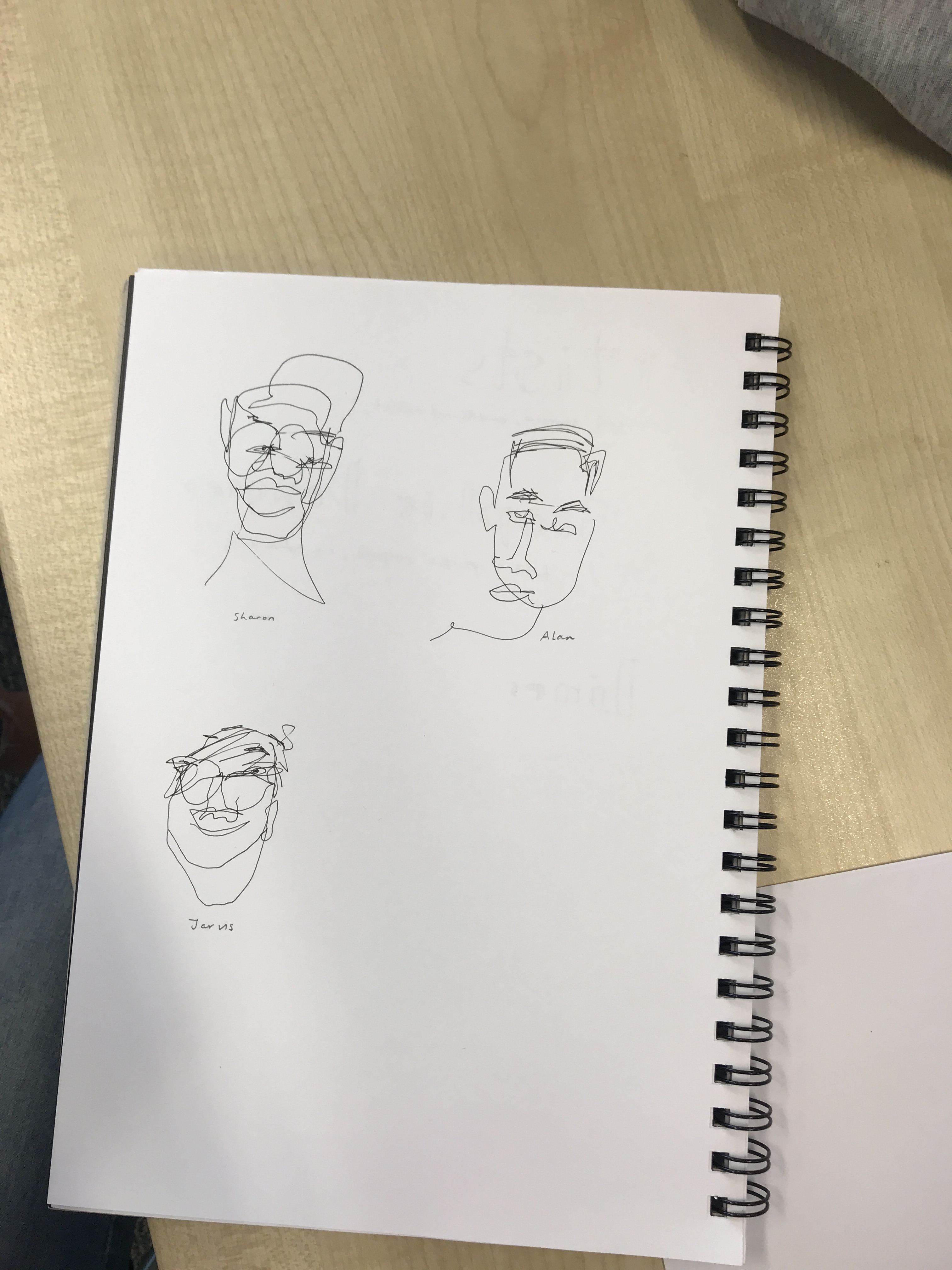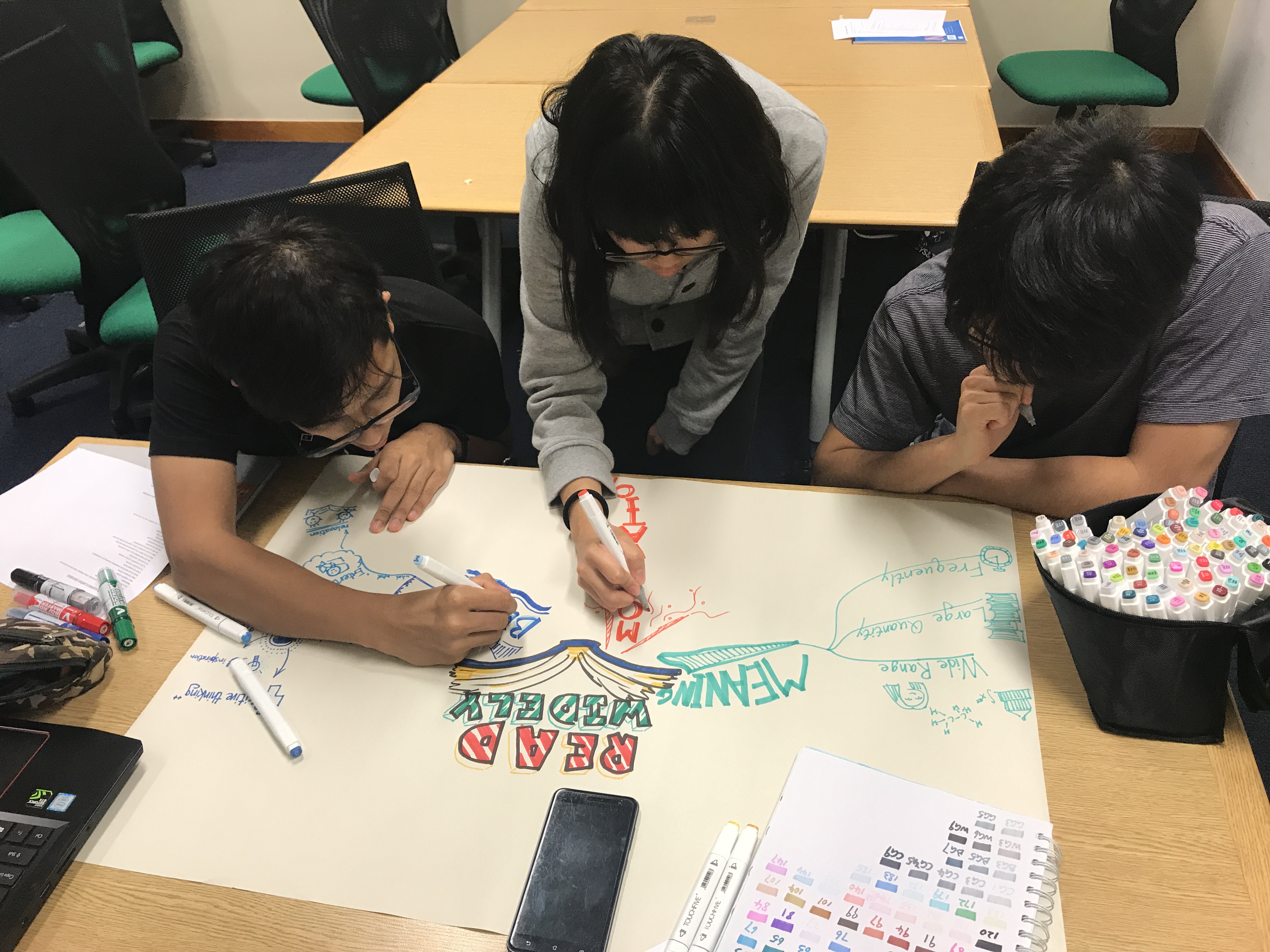2018-19 Fall
(HART 1036)
1 Credit | Can be used to fulfill Common Core Requirement (Core Elective: Arts Area)
Teaching Medium: English.
Course Description
Graphic design is the art of communication through the combination of images and words into a unified form to convey a clear message to an audience. Common uses of graphic design include logos, signs, publications, posters, print advertisements, product packaging and web sites, etc. This course aims to introduce students to what graphic design is and the design process. The basic elements, principles and process of graphic design will be explored and illustrated by works of famous graphic designers. Through the problem-solving approach, students will learn how to apply the design basics to create graphic design solutions. Class time is devoted to lectures, exercises, and critiques where students are asked to evaluate each other’s work. Such evaluations are very important in the development of analytical thinking and communication proficiency.
IMPOARTANT NOTE:
The course focuses on introducing design principles and process to enable students to create graphic design work. This is NOT a graphic design software training course. However, supplementary workshops on Adobe Photoshop (PS) and Illustrator (AI) will be arranged outside regular class time to introduce students to basic tools and techniques of these software for creating digital artworks. Students with no prior knowledge about PS or AI are recommended to attend. Tentative details of the supplementary workshops will be provided later through CANVAS.
Minimum Attendance Requirement for a 'Pass'
The course requires students to attend at least 8 sessions (80%) after add/drop period, including any approved excuses.
- Describe what graphic design is and its role in society
- Identify and describe how the use of design elements and principles contribute to the visual communication of ideas
- Apply the basic principles of graphic design to communicate a message visually to an audience
- Develop self-analytical judgment by exchanging critical and supporting ideas in a peer group setting
Session 1: Introduction of graphic design
Session 2: Elements of graphic design
Session 3: Principles of graphic design
Session 4: Word and image
Session 5: Layout design
Session 6: Design process: Design project briefing and research
Session 7: Design process: ideas generation
Session 8: Design Process: Ideas development
Session 9: Design process: interim ideas presentation
Session 10: Professional practice of graphic design
Session 11-12: Design process: visual refinement and final presentation
*Software workshops (Illustrator / Photoshop) :
Recommended for students without prior knowledge about Photoshop/Illustrator
Theory and Practice
Resnick, E. (2003). Design for Communication – Conceptual Graphic Design Basics. New Jersey: Wiley & Sons
- McAlhone, B. and Stuart, D. (1996). A Smile in the Mind. London: Phaidon Press Ltd.
- Elam, K. (2007). Typographic Systems. New York: Princeton Architectural Press.
- Wilde, R. (1986). Problems: Solutions – Visual Thinking for Graphic Communicators. New York: Van Nostrand Reinhold.
E-resources
www.complex.com/style/2012/03/20-graphic-designers-you-should-know
www.thegoodagency.co.uk
www.sagmeisterwalsh.com
www.anothermountainman.com
Hong Kong International Poster Triennial 2014/2017
www.facebook.com/pg/HKIPT/photos/?ref=page_internal
Enrolment Details
Course Registration : 23-24 Aug 2018Add/Drop : 03-15 Sep 2018
Instructor
Alice LO
Assessment
| Participation in class discussions and critiques | 30% |
| Workshop exercises | 30% |
| Major graphic design project with reflective learning report | 40% |
Class Schedule
Monday | 13:30-15:20
Library
LG4 Multi-function Room
LG1 Tutorial Space (8, 22, 29 Oct & 5 Nov)
No Class | 1 Oct
Software Workshop (optional)
Tentative details of the supplementary workshops will be provided later through CANVAS


